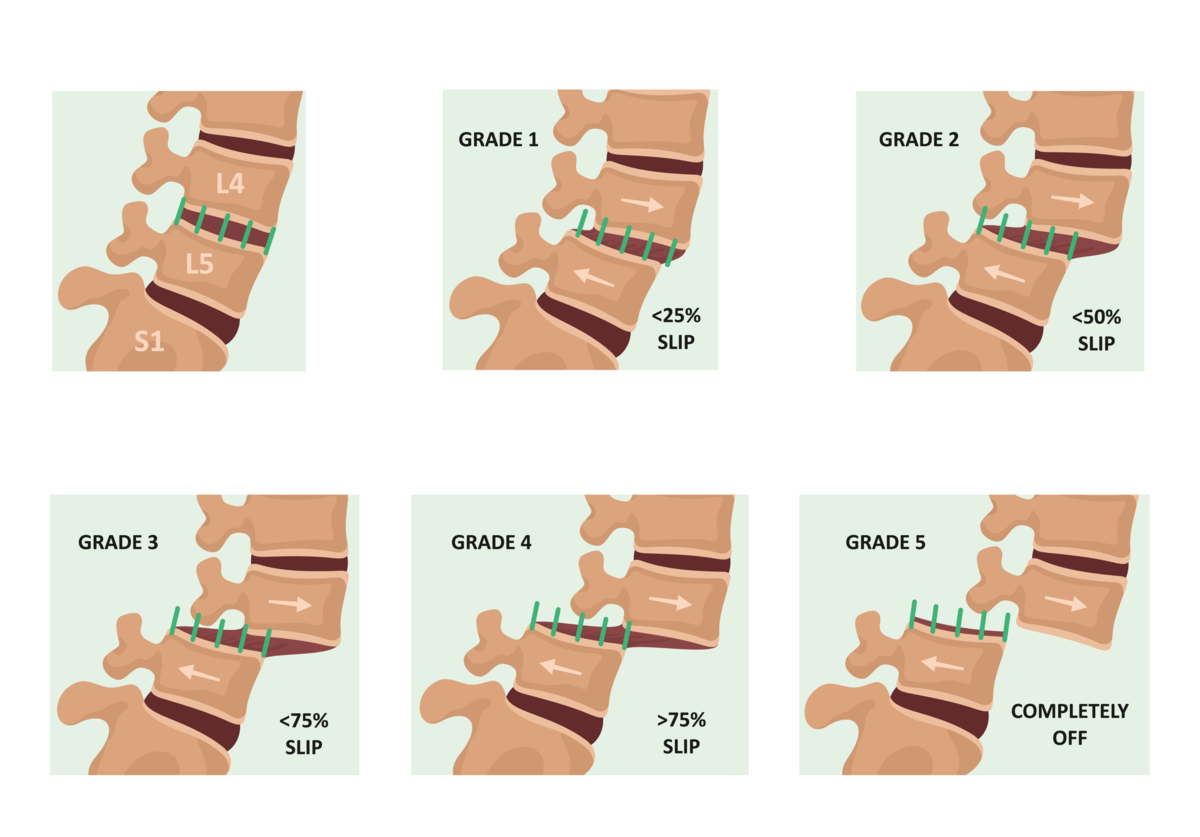Spondylolysis and Spondylolisthesis
Spondylolysis, also known as “pars fracture”, is a fracture of the posterior elements of the spine. It typically is caused by repetitive stress on the spine and is often seen in young athletes, particularly those who participate in gymnastics, football, and weight lifting. It occurs in one out of every 20 people. While some active children and adolescents may experience symptoms of a pars fracture, sometimes the symptoms may not surface until adulthood. The most common location of a pars fracture is in the lumbar spine, specifically the lowest lumbar vertebra, L5. Symptoms include pain and stiffness in the lower back and occasionally weakness, tingling, or numbness in the legs.

Spondylolisthesis is a condition in which one vertebrae shifts compared to the one adjacent to it. This can put pressure on a nerve, causing pain, numbness, tingling, and/or weakness in the corresponding extremity. Spondylolisthesis can be caused by spondylolysis, trauma, or congenital or degenerative conditions. People with spondylolisthesis may not experience any symptoms, or their symptoms may be similar to those of spondylolysis.
There are five grades of spondylolisthesis:
- Grade 1: 1-25% slip
- Grade 2: 26-50% slip
- Grade 3: 51-75% slip
- Grade 4: 76-100% slip
- Grade 5: >100 % slip
A thorough history, physical exam, and x-ray are used to diagnose spondylolysis and spondylolisthesis. Advanced imaging such as an MRI and/or CT scan can also be diagnostic and guide treatment decisions.
Depending on the severity of pain, treatment options for both spondylolysis and spondylolisthesis can include medication, heat/ice, rest, physical therapy, a brace, or in some cases, surgery.
Learn More About Spondylolysis And Spondylolisthesis Treatment Options Provided By Hey Clinic
